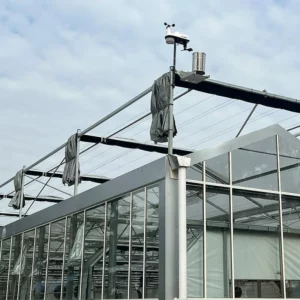Operating a blackout greenhouse system efficiently while minimizing costs requires a combination of smart practices, technologies, and strategic investments.
Here are some cost-saving strategies for operating a blackout greenhouse system:
- Invest in Energy-Efficient Lighting: Choose energy-efficient lighting systems such as LED grow lights. Although the initial investment may be higher, LED lights consume less energy and have a longer lifespan, reducing electricity costs over time.
- Implement Light Deprivation Curtains: Use light deprivation curtains or covers to block out sunlight during the blackout period. Opt for high-quality, durable materials that provide effective light blocking to minimize the need for supplemental lighting during blackout periods.
- Optimize Heating and Cooling Systems: Install energy-efficient heating and cooling systems and use them judiciously to maintain optimal temperatures inside the greenhouse. Implementing proper insulation and ventilation strategies can help reduce heating and cooling costs.
- Utilize Natural Ventilation: Take advantage of natural ventilation whenever possible to regulate temperature and humidity levels inside the greenhouse. Install roof vents, side vents, and louvers to promote airflow and reduce the need for mechanical ventilation systems.
- Implement Automated Environmental Controls: Invest in automated environmental control systems that monitor and adjust temperature, humidity, and CO2 levels based on predefined parameters. Automated systems can optimize resource use and reduce energy consumption compared to manual operation.
- Water Management and Irrigation: Implement water-efficient irrigation systems such as drip irrigation or micro-sprinklers to deliver water directly to plant roots while minimizing wastage. Collect and reuse rainwater or condensate from heating and cooling systems to reduce water consumption.
- Use Recycled or Renewable Materials: When constructing or renovating the greenhouse, opt for recycled or renewable materials wherever possible. China Blackout Greenhouse supplier This includes using recycled plastic for greenhouse coverings, renewable energy sources such as solar panels, and sustainable building materials for infrastructure.
- Implement Integrated Pest Management (IPM): Implement IPM practices to minimize the use of chemical pesticides and reduce associated costs. This includes using biological controls, crop rotation, and habitat manipulation to manage pests and diseases effectively.
- Maximize Space Utilization: Optimize the layout of the greenhouse to maximize growing space and minimize wasted space. Utilize vertical growing systems, such as shelves or trellises, to increase the number of plants per square meter and improve productivity.
- Monitor and Analyze Performance: Regularly monitor and analyze energy consumption, water usage, and other operating costs to identify areas for improvement and optimize resource allocation. Use data-driven insights to make informed decisions and implement cost-saving measures effectively.
By implementing these cost-saving strategies, growers can operate a blackout greenhouse system efficiently while minimizing operational costs and maximizing profitability. Additionally, investing in sustainable practices can contribute to environmental stewardship and long-term viability.
